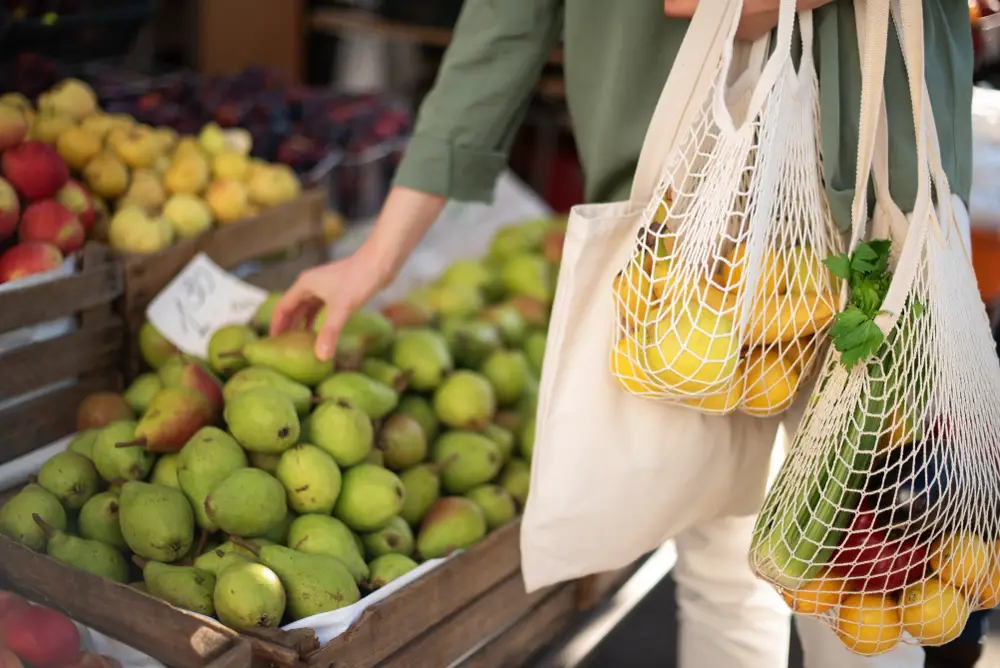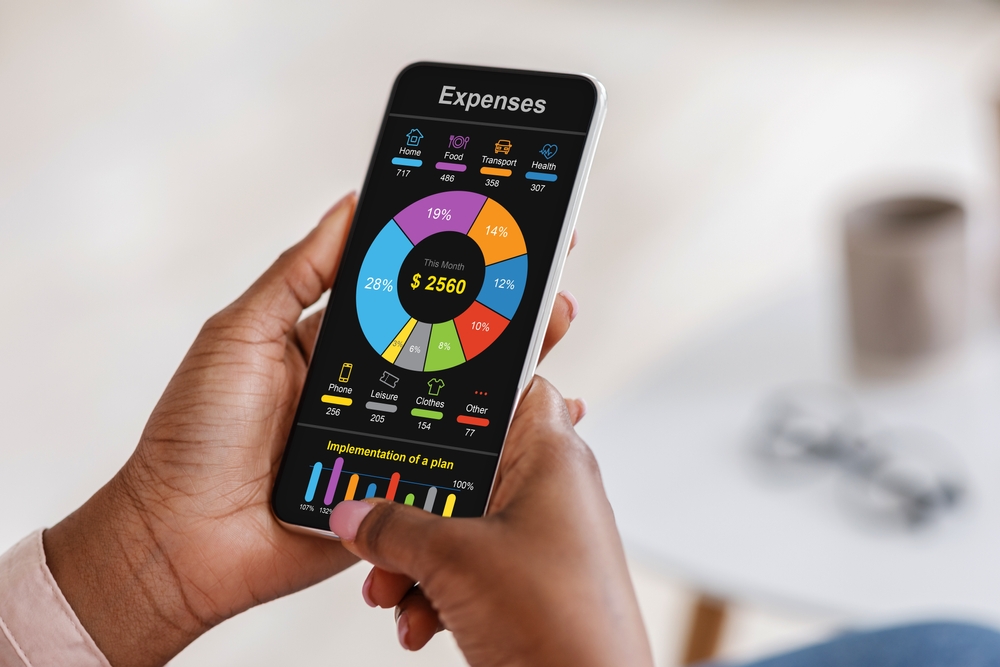Life’s essentials are getting pricier, and it’s hitting people where it hurts. Many of us feel the pinch on our wallets more than ever as costs rise for everyday necessities that we used to take for granted. You’ve probably noticed that a trip to the grocery store just isn’t the same as it was a few years ago. To make matters worse, it’s not just food—other basics you rely on have also seen a surprising spike in costs. Let’s dive into some of these essentials that are now outrageously priced and see if you can relate.
1. Fresh Produce

Once a staple of a healthy diet, fresh fruits and vegetables may now feel like a luxury. As climate change affects agriculture, the weather patterns necessary for growing stable crops are increasingly unpredictable. This is not just bad news for farmers but also translates to higher prices for everyday shoppers. According to a 2022 report by the USDA, extreme weather events are contributing to crop failures and driving up the cost of these essential foods. When buying fresh tomatoes feels like a treat, you know something’s gone awry.
Beyond environmental issues, logistical challenges also play a role in these price increases. Transportation costs, driven by fluctuating fuel prices, add to the mounting expenses faced by consumers. These costs are subsequently passed on to you, the unsuspecting shopper, who just wants to make a salad without breaking the bank. The complexity of global supply chains means that any disruption can lead to significant price hikes, leaving many to rethink their grocery budgets. As a result, people are seeking alternatives to fresh produce, like frozen or canned options, which often lack the same nutritional value.
2. Childcare

The cost of childcare has skyrocketed, leaving families grappling with difficult decisions about balancing work and parenting. For many, the expense of daycare or hiring a nanny now rivals that of college tuition, a situation that was unthinkable just a decade ago. Parents are increasingly finding themselves in a bind, having to choose between their careers and affordable childcare options. The rising costs are partly due to a shortage of qualified childcare workers, compounded by increased demand as both parents often work. It’s a challenging landscape for families trying to ensure their children are nurtured and safe.
Additionally, regulatory requirements and safety standards are becoming stricter, which, while crucial for child safety, add to the operational costs of childcare providers. With these regulations come additional training, certification, and facility upgrades—all of which contribute to rising fees. Many parents also find themselves on waitlists for quality childcare, further complicating the situation. This can lead to a cascade of financial stress and job insecurity, as parents may need to reduce work hours or switch jobs to accommodate childcare needs. It’s a tough scenario, leaving people to get creative about sharing responsibilities and exploring alternative care options.
3. Prescription Medications

Prescription drugs used to be reasonably affordable, but they now seem to come with an eye-watering price tag. For those with chronic conditions, this trend can be particularly debilitating, forcing difficult choices between medication and other essentials. According to a 2023 study by health economist Dr. Lisa R. Schwartz, as pharmaceutical companies face fewer regulations on pricing, they have more freedom to set prices that maximize profits. This lack of control often leaves patients vulnerable to financial exploitation, exacerbating health inequalities. It’s not just a financial issue—it’s a public health crisis in the making.
Insurance coverage, once a buffer against high prescription costs, is also eroding. High deductible plans and increased co-pays mean people are footing more of the bill themselves. For those without insurance, the situation is even more dire, often leading to skipped doses or untreated conditions. In response, some are turning to generic drugs, importation, or even online pharmacies, which come with their own set of risks. As this issue continues to grow, the call for systemic reform in drug pricing and healthcare coverage becomes ever louder.
4. Housing

The dream of homeownership seems increasingly unattainable as real estate prices soar. Even renting, once the more affordable option, is spiraling upwards, putting pressure on people from all walks of life. Many blame this on a lack of affordable housing, coupled with an influx of investment properties driving up market prices. This has created a competitive and often ruthless real estate environment, where people are forced to bid higher or settle for less. As people spend more of their income on housing costs, other areas of their lives can suffer.
In addition to high purchase prices, property taxes and maintenance costs contribute to the financial burden. For renters, annual increases in rent can quickly erode any semblance of financial security. The rise of remote work initially promised relief by allowing people to move to less expensive areas, but this has often led to price increases in those regions as well. Displacement and gentrification have become common as neighborhoods transform in response to new demand. Housing, an essential human need, has turned into a formidable challenge for many, creating a cycle of inequality and instability.
5. Utility Bills

Turning on the lights or heating your home shouldn’t be a luxury, but rising utility costs are making it feel that way. Factors like climate change are increasing demand for energy as people rely more heavily on heating and cooling systems. According to a 2023 report by the International Energy Agency, these changes, combined with aging infrastructure, are contributing to a steady rise in utility costs worldwide. More people are finding their monthly bills creeping up, often without an increase in usage. It’s a struggle, leaving people to rethink how they consume energy daily.
The transition to renewable energy sources, while necessary, also comes with upfront costs that can be passed down to consumers. Utility companies are investing in solar, wind, and other renewable technologies, which often require significant capital. While these initiatives promise long-term savings and environmental benefits, the short-term impact on your wallet can be an unwelcome surprise. Many people are trying to offset these costs by increasing home efficiency, but this too requires an initial investment. As the push towards sustainable energy continues, the intersection of environmental responsibility and affordability remains a crucial conversation.
6. Transportation

Whether you’re commuting to work or running errands, the cost of getting around has increased significantly. Rising fuel prices, along with the cost of vehicle maintenance, make owning a car more expensive than ever. Public transportation, often seen as the cheaper alternative, is also facing budget cuts and fare hikes, reducing its accessibility. The price of new and used vehicles has seen sharp increases, driven by supply chain issues and a global chip shortage. As a result, people are spending a larger chunk of their income just to keep moving.
For those trying to go green, electric vehicles provide an option but present their own financial barriers. Although they promise savings on fuel and maintenance in the long run, the initial purchase price can be prohibitive. This leaves many in a difficult position, wanting to make environmentally friendly choices but unable to afford them. The increasing costs associated with both traditional and alternative modes of transportation pose a challenge for people trying to balance sustainability with financial viability. It’s a complex issue that demands innovative solutions and policy reform.
7. Higher Education

The cost of higher education has become a major financial hurdle, leaving many to question the value of a degree. College tuition and fees have risen faster than inflation, creating a significant barrier to entry. As reported by higher education analyst Dr. Jonathan D. Glater in a 2023 study, the rising costs are partly due to expanded administrative staff and increased amenities designed to attract students. While these enhancements may improve campus life, they contribute to the growing student debt crisis. For many, the prospect of repaying loans overshadows the benefits of obtaining a degree.
Scholarships and financial aid, while available, often fall short of covering the full cost of education. Students and families are increasingly relying on loans, which can lead to years of financial strain. Additionally, the pressure to choose lucrative fields of study over passion projects can impact job satisfaction and career longevity. This situation creates a difficult dynamic where people must weigh immediate financial concerns against long-term career aspirations. As students and families navigate this complex landscape, the call for reform in education financing grows stronger.
8. Health Insurance

Health insurance is supposed to be a safety net, but for many, it’s becoming a financial burden. Even those with insurance find themselves facing high deductibles and unexpected out-of-pocket expenses. As a result, people are delaying necessary treatments or forgoing visits to specialists, potentially compromising their health. The complex nature of insurance plans often leaves policyholders confused about their coverage, leading to surprise bills. It’s a precarious situation, forcing people to play a careful balancing act between affordability and adequate medical care.
Employer-sponsored plans, once a reliable source of comprehensive coverage, are also evolving. Many companies have shifted more costs to employees, whether through premium increases or reduced benefits. For freelancers and gig workers, accessing affordable insurance can be even more challenging, with limited options available. The rise in medical costs, coupled with these insurance challenges, is putting healthcare out of reach for many. As people struggle to get the care they need, the push for universal healthcare solutions is gaining momentum.
9. Home Appliances

Purchasing home appliances, once considered a standard household expense, has become a more significant financial undertaking. As manufacturers face increased production costs, these are passed down to consumers in the form of higher price tags. Supply chain disruptions have further compounded the issue, making appliances not only more expensive but also harder to find. This can be particularly frustrating for those in need of immediate replacements to maintain everyday household functions. With the cost of essential items like refrigerators and washing machines rising, people are rethinking their purchasing priorities.
In an attempt to counteract these costs, many are turning to second-hand or refurbished options. While this can provide short-term savings, it may not always be a viable long-term solution due to potential reliability issues. The push for energy-efficient and smart appliances also comes with a higher cost, despite offering future utility savings. This dilemma leaves people caught between the desire for modern conveniences and the reality of financial constraints. As people weigh their options, the importance of budgeting and planning for these necessary expenses becomes ever clearer.
10. Internet Access

In a world that increasingly relies on digital connectivity, internet access has become a necessity, yet it’s pricier than ever. The shift to remote work and online learning has highlighted just how crucial stable, high-speed internet is for daily life. However, many people find themselves paying more for services that still don’t meet their needs, whether due to speed limitations or data caps. The digital divide has widened, with rural and low-income communities often left with subpar options. It’s a frustrating reality for those trying to keep up with the demands of a digital world.
Service providers cite infrastructure costs and technological upgrades as reasons for increased prices. Yet, these companies often enjoy regional monopolies, limiting consumer choice and leaving people with little room to negotiate. As prices rise, many are forced to make difficult decisions about which services to prioritize and which to cut. The growing necessity of internet access for work, education, and social connectivity means these decisions are coming at a personal and professional cost. As society continues to digitize, the push for affordable, equitable internet access becomes more pressing.
11. Clothing

Clothing is another area where costs have quietly crept up, affecting people’s ability to afford basic wardrobe essentials. This is partly due to the rising cost of raw materials and labor, which are essential components of garment production. Fast fashion, while initially a cheaper alternative, often results in higher costs in the long run due to its lack of durability. As people become more aware of the environmental impact of disposable clothing, there is a growing demand for ethically produced, sustainable options, which tend to be more expensive. This leaves consumers in a difficult position, trying to balance cost with conscience.
The fashion industry’s shift towards sustainability and ethical sourcing, while commendable, has added to the cost of production. As brands strive to meet consumer demands for transparency and environmental responsibility, these added expenses are often reflected in retail prices. Many are turning to second-hand and vintage markets to find affordable, unique pieces, but this can require time and effort. The challenge of staying stylish and comfortable without overspending is one many people face as they navigate this changing landscape. Ultimately, the focus is shifting towards valuing quality over quantity, making each purchase more intentional.
12. Meat and Dairy

Meat and dairy products, long considered staples of the American diet, are becoming increasingly expensive. This trend is driven by a combination of factors, including rising feed costs, supply chain disruptions, and climate-related challenges. Livestock farming is resource-intensive, and fluctuations in feed prices directly impact the cost of meat and dairy products. Additionally, the environmental impact of these industries is prompting a shift towards more sustainable practices, which can raise production costs. It’s a tough situation for people trying to balance budgetary constraints with dietary preferences.
With prices on the rise, many are reevaluating their consumption habits, exploring plant-based alternatives as a way to cut costs. However, the transition to a more plant-based diet is not always straightforward, as these alternatives can also be pricey. As people navigate these choices, there is an increasing focus on local and seasonal products, which can offer cost savings and environmental benefits. This shift requires a reevaluation of traditional eating habits and an openness to experimenting with new foods. As the food landscape evolves, flexibility and adaptability become key to managing costs and maintaining a balanced diet.
13. Personal Care Products

The cost of personal care items, from shampoo to toothpaste, has quietly escalated, straining household budgets. Rising manufacturing and packaging costs, combined with the demand for natural and organic ingredients, have driven prices up. People have become more conscientious about the products they use, seeking out options that are both effective and environmentally friendly. While this shift is beneficial for health and sustainability, it often comes with a higher price tag. Navigating the world of personal care products now requires more research and budgeting than it did in the past.
The beauty and wellness industry continues to expand, offering a plethora of new products and innovations. While this variety is exciting, it also means consumers are faced with more choices and, often, more confusion. Many are turning to DIY solutions and minimalist routines to pare down costs and simplify their lives. This trend towards simplicity and prioritization can lead to more thoughtful consumption and a focus on quality over quantity. As people redefine their personal care routines, they are learning to distinguish between essential products and those that are merely nice to have.
14. Cleaning Supplies

Keeping your home clean is a basic necessity, yet the cost of cleaning supplies has shot up, adding to household expenses. Raw material shortages and increased demand during periods of heightened health awareness have contributed to these rising prices. You might find yourself paying more for the same products that used to be a minor expense on your shopping list. As a result, people are seeking alternative solutions, like making their own cleaning products or opting for bulk purchases. These approaches can save money but require time and effort to implement effectively.
The push for environmentally friendly cleaning products also plays a role in these price increases. Many consumers are now more willing to pay a premium for products that are safe for their families and the planet. However, this can create a dilemma for those trying to balance eco-consciousness with affordability. The cleaning industry is responding with more sustainable and concentrated product offerings, aiming to provide value without sacrificing performance. Navigating this new market requires careful consideration and sometimes creative problem-solving, as people strive to maintain a clean and healthy home environment without overspending.
15. Pet Care

For pet owners, the cost of caring for their furry friends has become a significant budget item. From food to vet visits, expenses have risen as the pet industry continues to grow and evolve. The demand for premium pet foods and specialized health care has driven up costs, reflecting a broader trend towards treating pets as family members. While this shift has led to improved products and services, it also means people must allocate more of their income to pet care. For many, the challenge lies in balancing their desire to pamper their pets with the need to manage expenses.
The increasing costs of veterinary care are also a concern for pet owners. Advances in medical technology and treatments for animals have improved care but come with higher price tags. Pet insurance can provide some relief, but it adds another expense to manage. Many are exploring alternative care options, such as holistic treatments, to mitigate costs while ensuring their pets’ wellbeing. As people navigate these financial challenges, they are finding new ways to show love and care for their pets without compromising their financial stability.
This article is for informational purposes only and should not be construed as financial advice. Consult a financial professional before making investment or other financial decisions. The author and publisher make no warranties of any kind.








